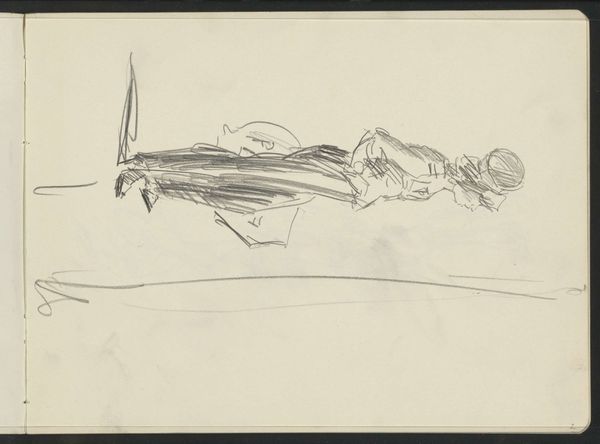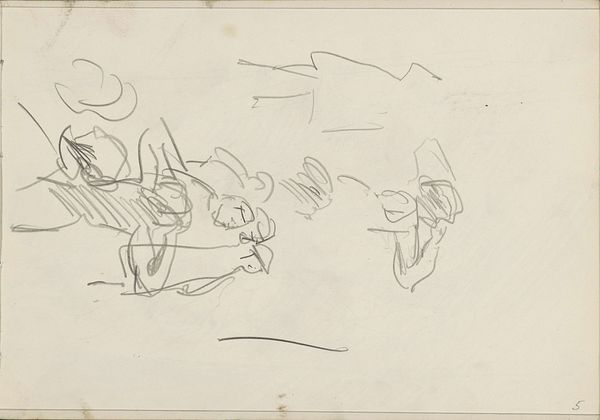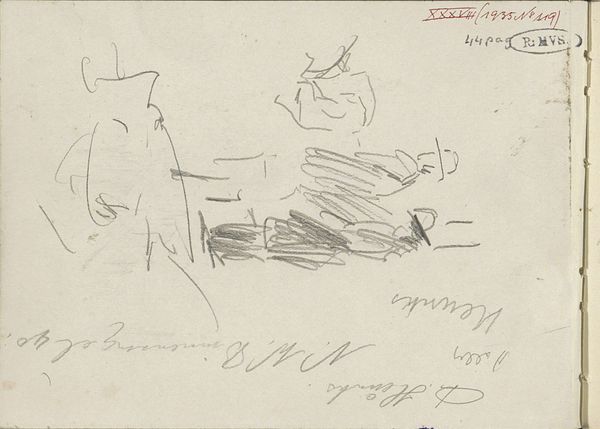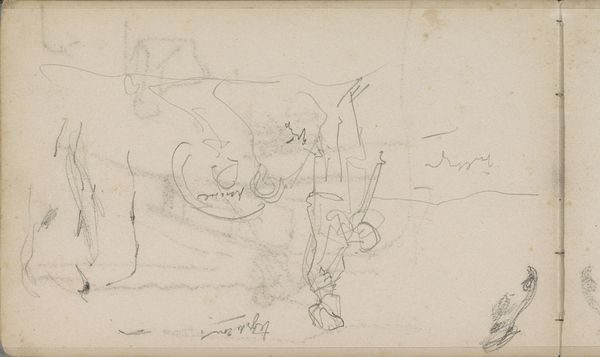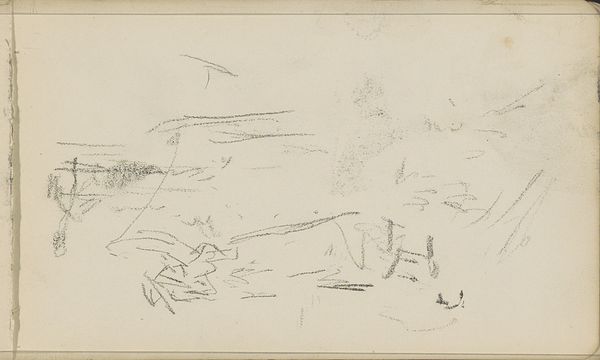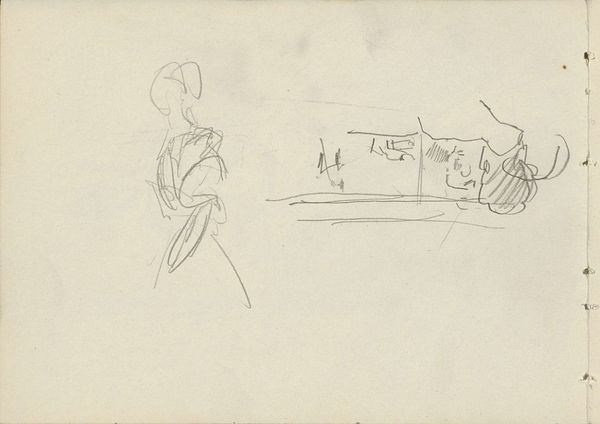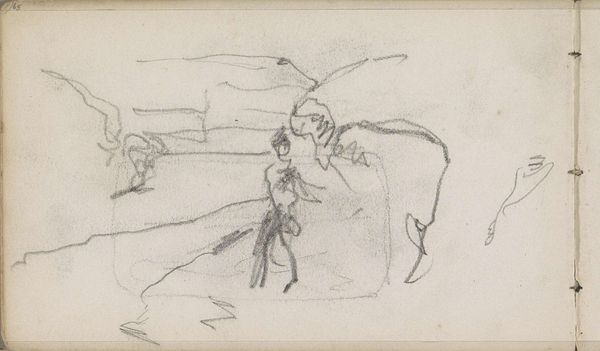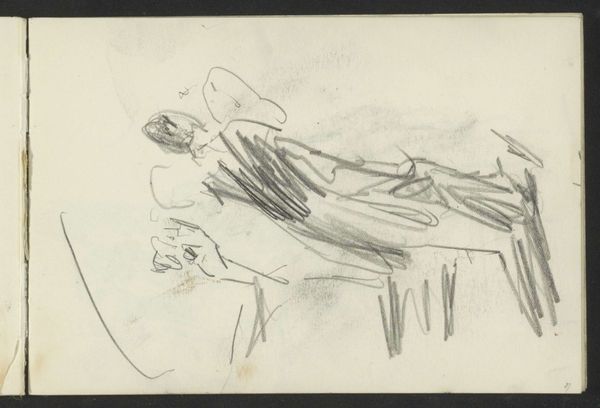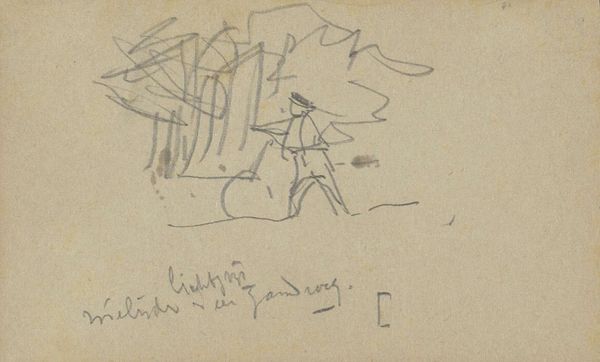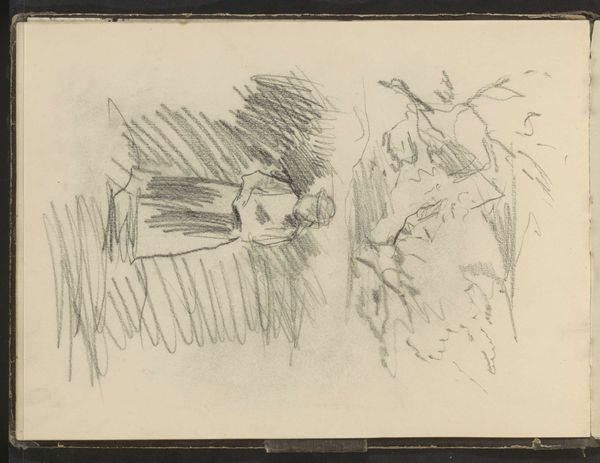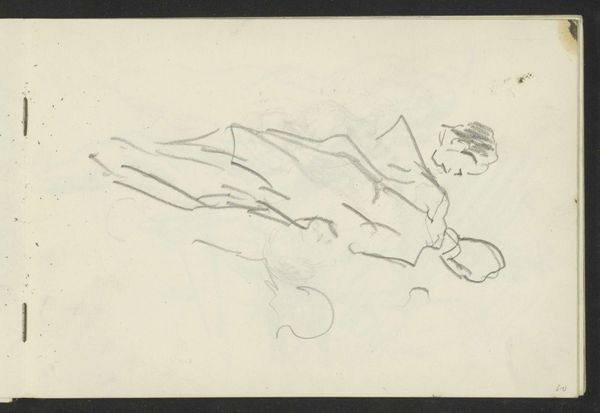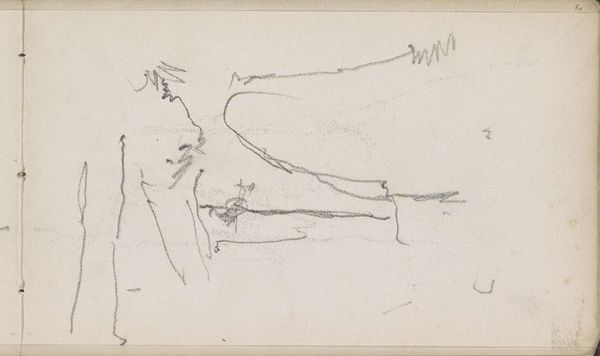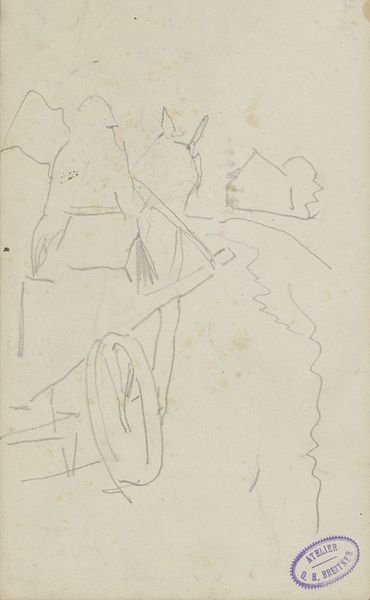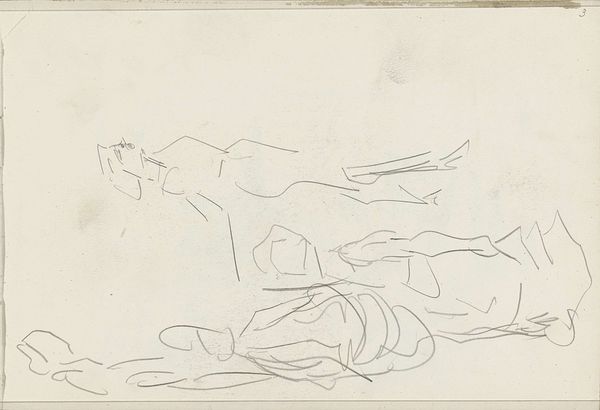
Copyright: Rijks Museum: Open Domain
Curator: Here we have “Ruiter in een landschap,” or “Rider in a Landscape,” a pencil and pen drawing by George Hendrik Breitner, likely created sometime between 1885 and 1898. Editor: There’s a beautiful fragility to it, a fleeting sense of a figure emerging and dissolving into the scene. The lines are so minimal, yet so evocative. Curator: Indeed. The sketch prioritizes pure form and quick expression. Breitner captures movement through these jagged, broken lines, focusing on the play of light across the rider's cloak and the suggestion of the horse beneath. It appears the work originated from one of the artist's personal sketchbooks. Editor: Looking at this I'm more interested in Breitner's world than formal technique. Given Breitner’s involvement in documenting Amsterdam's daily life, especially his photos of working-class neighborhoods, one wonders about the identity of this rider. Is he an anonymous figure from Amsterdam's outskirts? Was Breitner drawn to some equestrian event? I also see inscription notations here within the work. Curator: The lack of specificity becomes the focus. The inscription might reveal insights into Breitner's thinking but also his composition style and planning techniques. The quick, confident lines around the horse and rider versus the more scribbled foliage on the right suggest differing levels of engagement. What do we make of the large empty space in the composition? Editor: The blank space certainly directs my focus onto the solitary rider, but that negative space, the unburdened backdrop makes me think about the socio-economic realities of that era—perhaps it suggests a commentary on progress. Was the city’s rapid industrial expansion beginning to overshadow quieter, rural existences? Curator: That’s a reading supported by the historical context, certainly. Though formally, one might simply view it as an emphasis on capturing the fleeting impression rather than a detailed narrative. Editor: The dialogue between formal interpretation and historical grounding is exactly why works like these resonate across time. You see composition and I see social context. Curator: Precisely, isn’t it? A single sketch, viewed through different lenses, yields such richness of understanding.
Comments
No comments
Be the first to comment and join the conversation on the ultimate creative platform.
